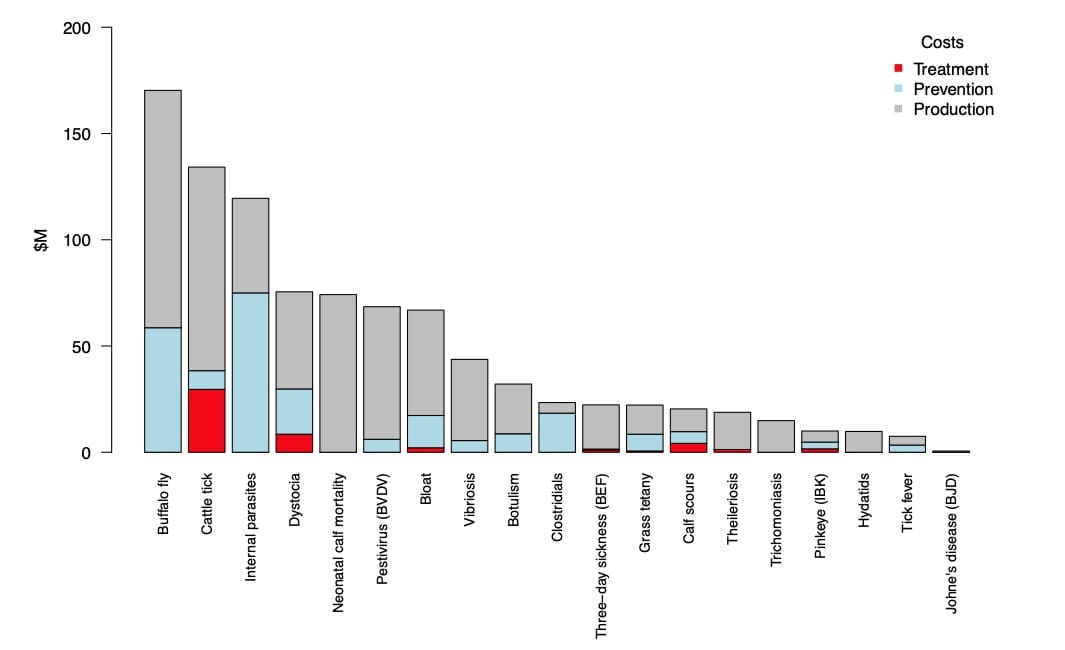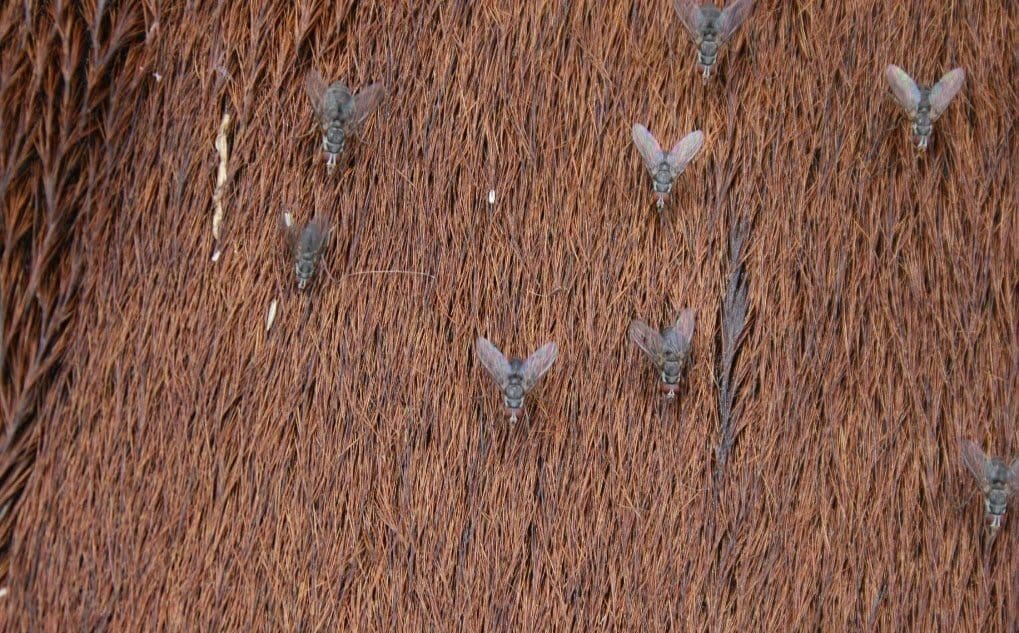
PARASITES and health issues remain a significant challenge for cattle production across the nation. In 2015, Meat & Livestock Australia published a report listing the priority endemic diseases facing the red meat industry, based on financial impact.
At that time, cattle tick was considered the costliest of the endemic parasites and diseases for the industry. This was followed by BVDV (Bovine Viral Diarrhoea Virus) otherwise known as pestivirus. The third most costly was incurred by buffalo fly.
This priority list has since been updated, with the most recent version released in 2022. It not only saw an increase in diseases on the list (from 17 to 18) but also a re-ranking in order of priority.
Buffalo Fly has now moved from third place to first, as the costliest of the endemic diseases (parasites) impacting the cattle industry. Its impact is considered greater than cattle tick, internal parasites or dystocia.
The 2022 report estimated that buffalo fly impacts across production.
Management cost southern Australian producers from $3.44/head (with low incidence) to $12.13/head, while for northern producers this cost increases from a low of $4.09/head to high levels of buffalo fly which cost $40.92/head.
A recent webinar hosted by ParaBoss heard from Dr Peter James from QAAFI on the challenges associated with buffalo fly.
In his opening comments, Dr James revealed the extent of buffalo fly, which has historically been more of an issue in northern Australia.
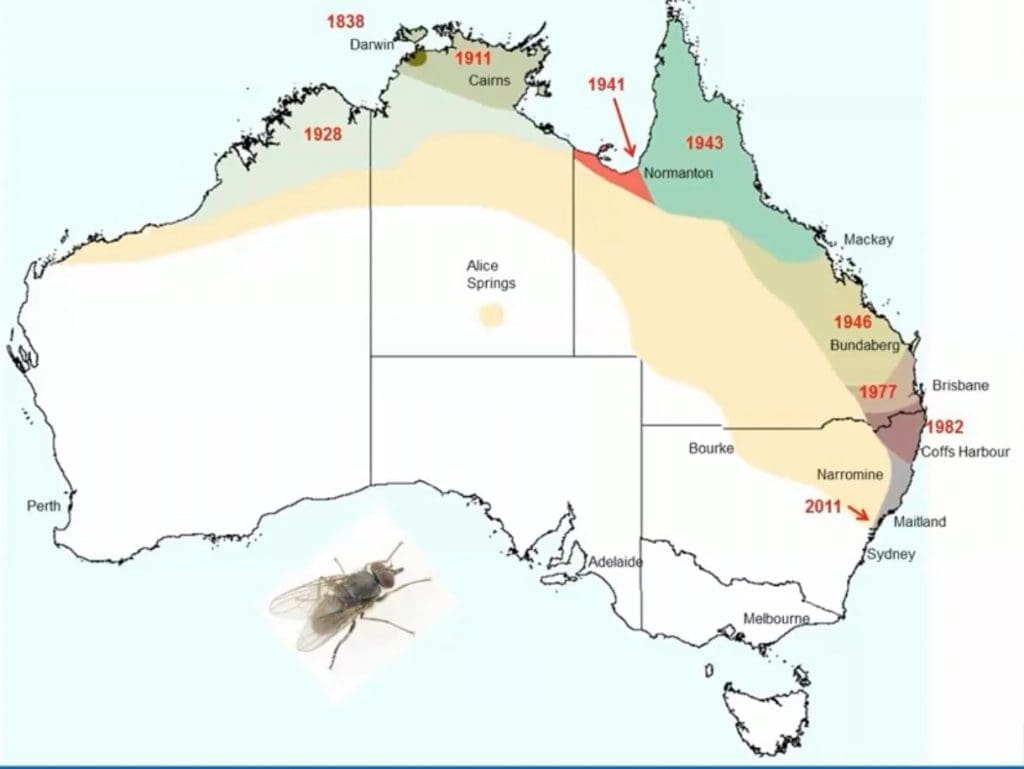
Source: ParaBoss – Controlling Buffalo Fly What Have We Learned Webinar – Peter James
As presented by Dr James, the extent to which buffalo fly has spread across the nation, particularly into southern and western areas of NSW is a significant concern.
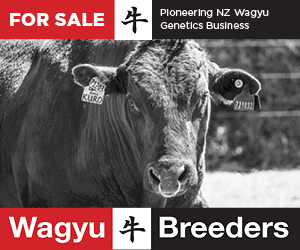 In many of these areas, buffalo fly is impacting on herds that have little or no ability to cope with an insect that can bite its host up to 40 times a day, leaving a rough hole after each bite.
In many of these areas, buffalo fly is impacting on herds that have little or no ability to cope with an insect that can bite its host up to 40 times a day, leaving a rough hole after each bite.
The impact of these bites and the constant annoyance factor, and the prevalence of flies is not only an issue in lost production. The lesions that occur because of bites are increasingly becoming a factor in the market acceptability of cattle, particularly considering the concerns associated with the overseas outbreaks of Lumpy Skin Disease, which has seen reduced tolerance of blemishes and lesions for northern cattle.
Selection for resistance?
Increasingly, controlling buffalo fly is becoming the focus of integrated management decisions, which focus on control of the fly and in selection for resistance.
Although the concept of using selection to reduce the impact of buffalo fly is not new, Dr James has pointed out that producers need to consider selection for buffalo fly and for reduced lesions as actually selecting for two different traits.
 As part of the recent ParaBoss webinar, he presented data showing three different groups of animals according to the presence of lesions (ranging from none to a high score).
As part of the recent ParaBoss webinar, he presented data showing three different groups of animals according to the presence of lesions (ranging from none to a high score).
Against these groups the numbers of buffalo fly were also considered, and while there was not statistically significant difference in numbers between the no lesion group and the high score group, there was a slight trend towards lower numbers of fly in the high lesion score group.
There are some messages in this for producers to consider.
The first is that selecting only to reduce the impact of buffalo fly may not resolve issues associated with lesions, and if lesions are a market concern, this needs to be a clear selection decision.
Dr James highlighted that within herds impacted by fly, there are smaller proportions of the herd that carry most flies. He also notes susceptibility to flies is heritable.
Two selection traits
By separating the impact of buffalo fly into two selection traits, producers can make effective selection strategies. Animals with lower fly numbers (observed visually) can be prioritised by a breeder over those with higher fly numbers.
Trial EBV
Dr James pointed out that visual observations can be very effective in determining for numbers, but the most accurate observations are taken in the paddock rather than yards where flies are disturbed.
For producers seeking to also select for reduced lesion scores, these can also be scored and used in selection. As a heritable trait, it has been proven that the same cattle with high lesion scores will have high scores year-on-year.
This provides producers an opportunity to rank animals from high to low and make selection choices on those rankings. BreedPlan is developing a trial EBV which would also provide data for producers wanting to select new sires that can also improve herd resistance.
Given the spread of buffalo fly into new areas in western & southern Australia, the impact on production systems is likely to increase in coming years.
Selection is certainly not the only tool that producers will be seeking to use to combat the impact of buffalo fly. However to make the most from selection, producers need to be clear on the traits they want to focus on and look to use the information that is available to make those decisions as effectively as possible.
- The full ParaBoss webinar focussing on Buffalo fly and what we have learnt so far is available here https://www.youtube.com/watch?v=xsAVAAoN8KA
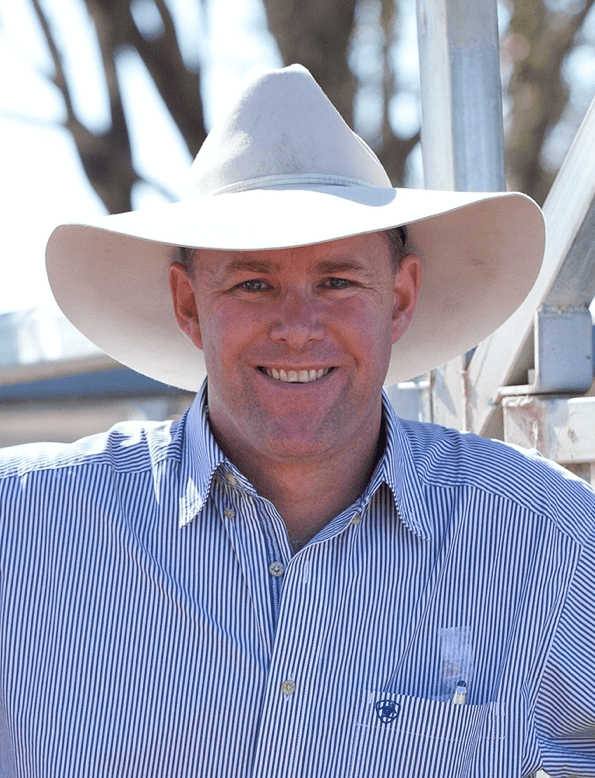 Alastair Rayner is the General Manager of Extension & Operations with Cibo Labs and Principal of RaynerAg. Alastair has over 28 years’ experience advising beef producers & graziers across Australia. He can be contacted here or through his website www.raynerag.com.au
Alastair Rayner is the General Manager of Extension & Operations with Cibo Labs and Principal of RaynerAg. Alastair has over 28 years’ experience advising beef producers & graziers across Australia. He can be contacted here or through his website www.raynerag.com.au

